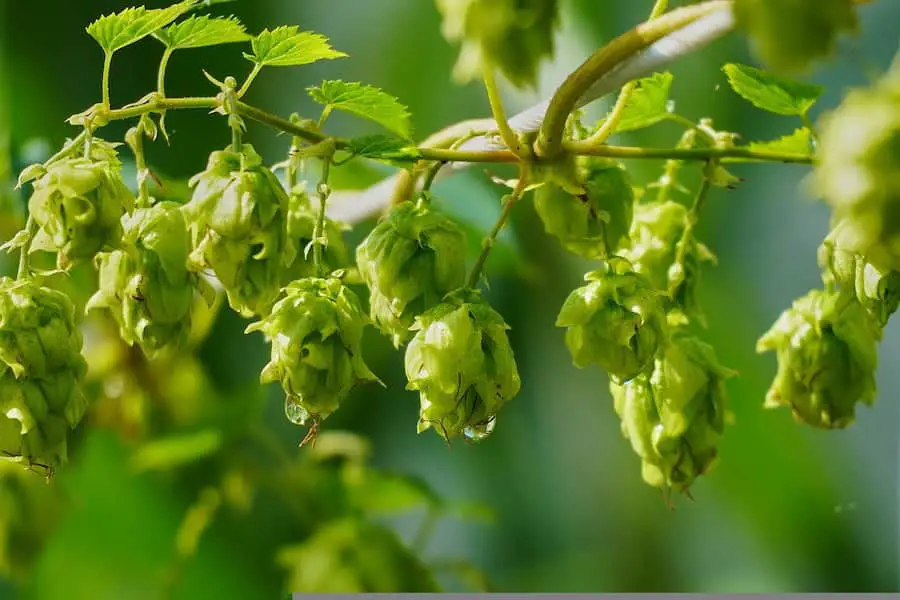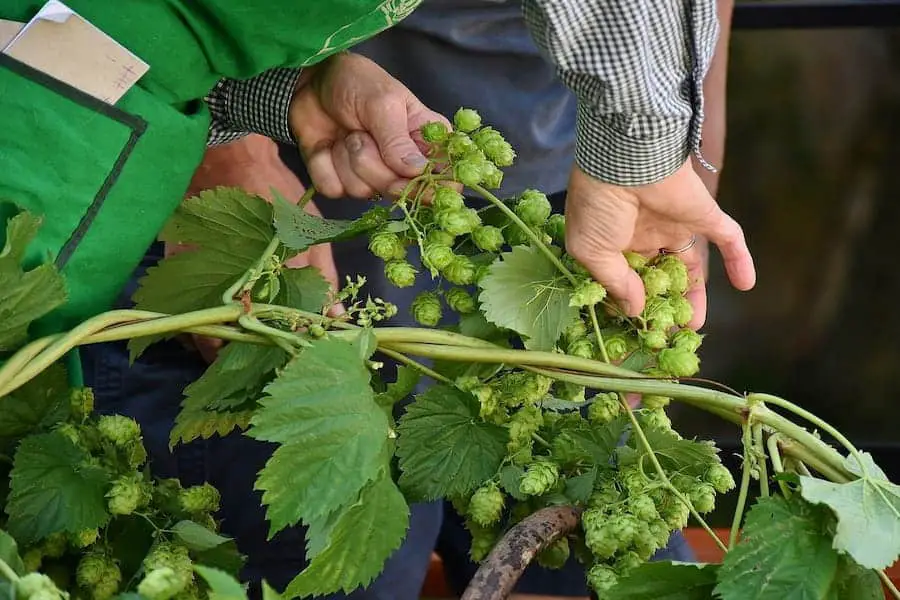If you buy something through a link in our posts, we may get a small share of the sale.
The hop plant Humulus lupulus produces hop flowers (also called seed cones or strobiles). In beer, they are primarily used as a flavoring and stability agent, balancing the sweetness of the malt while imparting a bitter flavor. So, how much hops for 1 gallon of beer?
Contents
How Much Hops for 1 Gallon of Beer?
You’ll need about 0.5 ounces (14 grams) of hops per gallon (3.8 L) of beer. This is the standard amount that many homebrewers use, and it’s also the amount suggested in most online hop calculators.
However, this is only a general guideline. The hops you’ll need will vary depending on your personal preferences, the beer style you’re brewing, and the other ingredients you’re using. It is also worth noting that the flavor and bitterness of hops can vary depending on the variety of hop and how fresh it is.
If you’re brewing a beer with a high hop bitterness (such as an IPA), you may need to use more hops. Similarly, if you’re brewing a beer with a lot of other strong flavors (such as a stout), you may not need to use as many hops.

How Do Hops Add Flavors to Beer?
Hops contain several compounds that can add different flavors to a beer. Each works in a different way and can have different effects on the final beer. The following are some of the major compounds in hops and the flavors they impart:
- Alpha acids-These are essential oils that give beer its bitter flavor. They also contain antioxidants that can help to stabilize the beer and slow down spoilage. If you are using fresh hops, the alpha acids can range from about 2 to 16 percent of their weight. If you’re using dried hops, they will typically contain about 8 percent of their weight in alpha acids.
- Beta acids-These are essential oils that help to stabilize the beer and give it its aroma. It can also add some spicy or clove-like flavors to the beer. The number of beta acids in hops can vary depending on the variety and growing conditions, however, they are typically lower than the alpha acids.
- Co-humulone-This is a chemical that gives the beer its aroma and also helps with bitterness. It creates a balance in the beer that prevents it from being too stringent or harsh.
- Myrcene-This is a compound that gives the beer its citrus aroma. It is also responsible for the taste of hops and can act as an antibacterial agent. Beer lovers often describe the taste of myrcene as being grassy, floral, or citrusy.
Methods for Adding Flavors to Beer
Hops have different flavors depending on how they are used in brewing. You don’t just want to add hops willy-nilly – you need to know how they affect the beer and how to get the flavor your want. Here are a few ways to add hops to your beer:
Dry-Hopping
Dry-hoping is generally done during the secondary fermentation stage . It involves adding hops to your beer after the wort has fermented into a finished beer. The fresh hops will sit in the beer and absorb the flavors.
Typically, you’ll want to add a lot of hops when dry-hopping to make sure the beer picks up the desired flavors. However, it’s important to note that dry-hopping can add a lot of bitterness to your beer if you’re not careful. If you want to avoid too much bitterness, you can add the hops for a shorter time or add them later in the fermentation process.

Flameout Additions
Flameout additions involve adding hops to your beer when you turn off the heat. You can add them to the wort immediately after it boils and stops bubbling. This will preserve the flavor while still leaving you with some bitterness.
Adding hops at the end of your boil can be a great way to get some of the flavors without too much bitterness. It can also create interesting flavors as some of the compounds will evaporate from the beer rather than being boiled off.
Cold-Crash Extracts
Here, the temperature of the fermented beer is lowered to near freezing. This will cause the flavors and aromas of the hops to be extracted from the beer.
This method is often used to make dry-hopped beer. The temperature is dropped right before the hops are added so that they can be absorbed into the beer without much bitterness.
Frequently Asked Questions
How Much Grain Do I Need for 1 Gallon of Beer?
Every 1 gallon batch of beer will need about 2 to 4 cups of grain. This can vary depending on the type of beer and the amount of hops you plan to use.
How Many Hops Do I Need for 5 Gallons of Beer?
You need 0.5–1.5 oz. of (14–42 g) of hops per 5 gallons of beer. This can vary depending on the type of hops and the amount of bitterness you want in your beer.
Conclusion
Hops are an essential component of beer. They give it its distinct flavor and aroma and some of its health benefits. If you’re brewing your beer, it’s important to know how many hops to use and how to use them for the best possible results.

